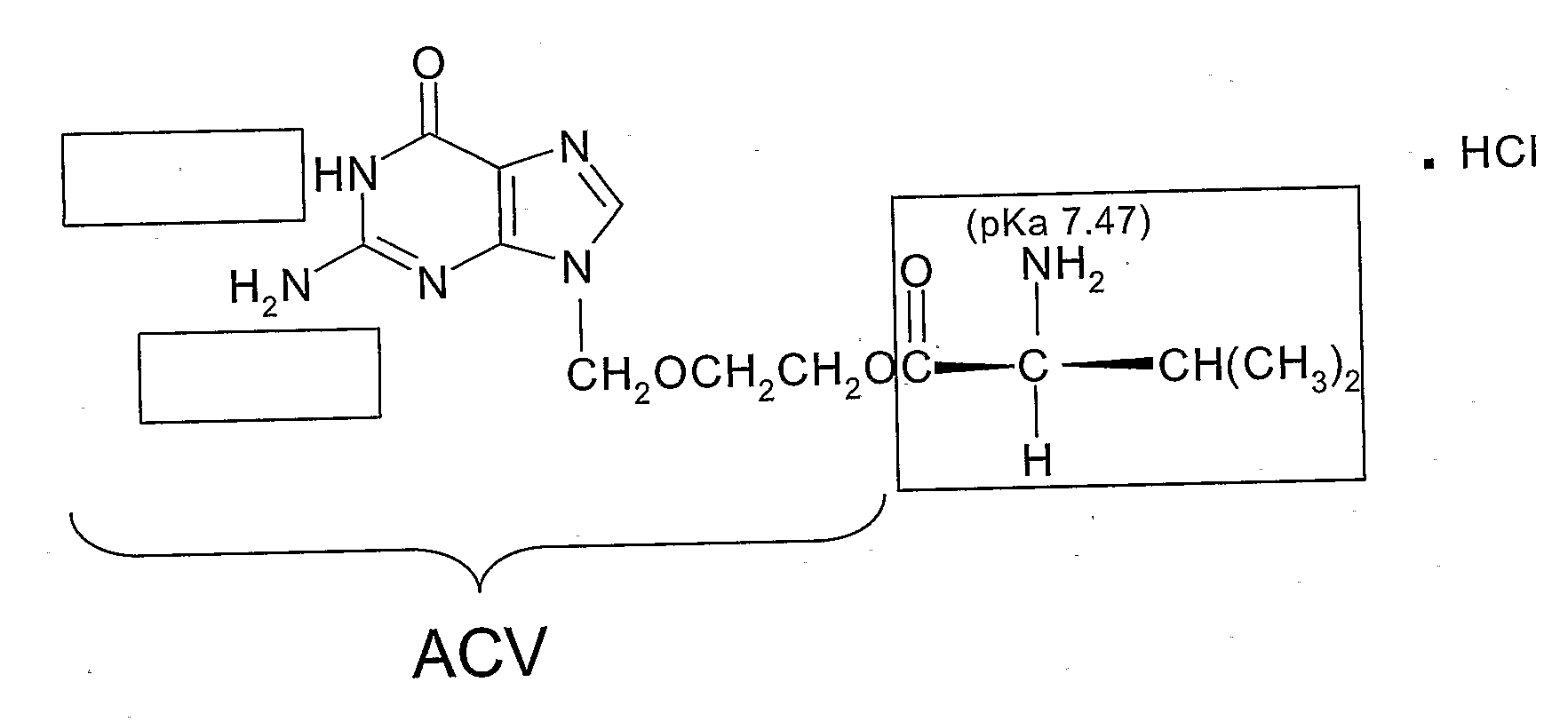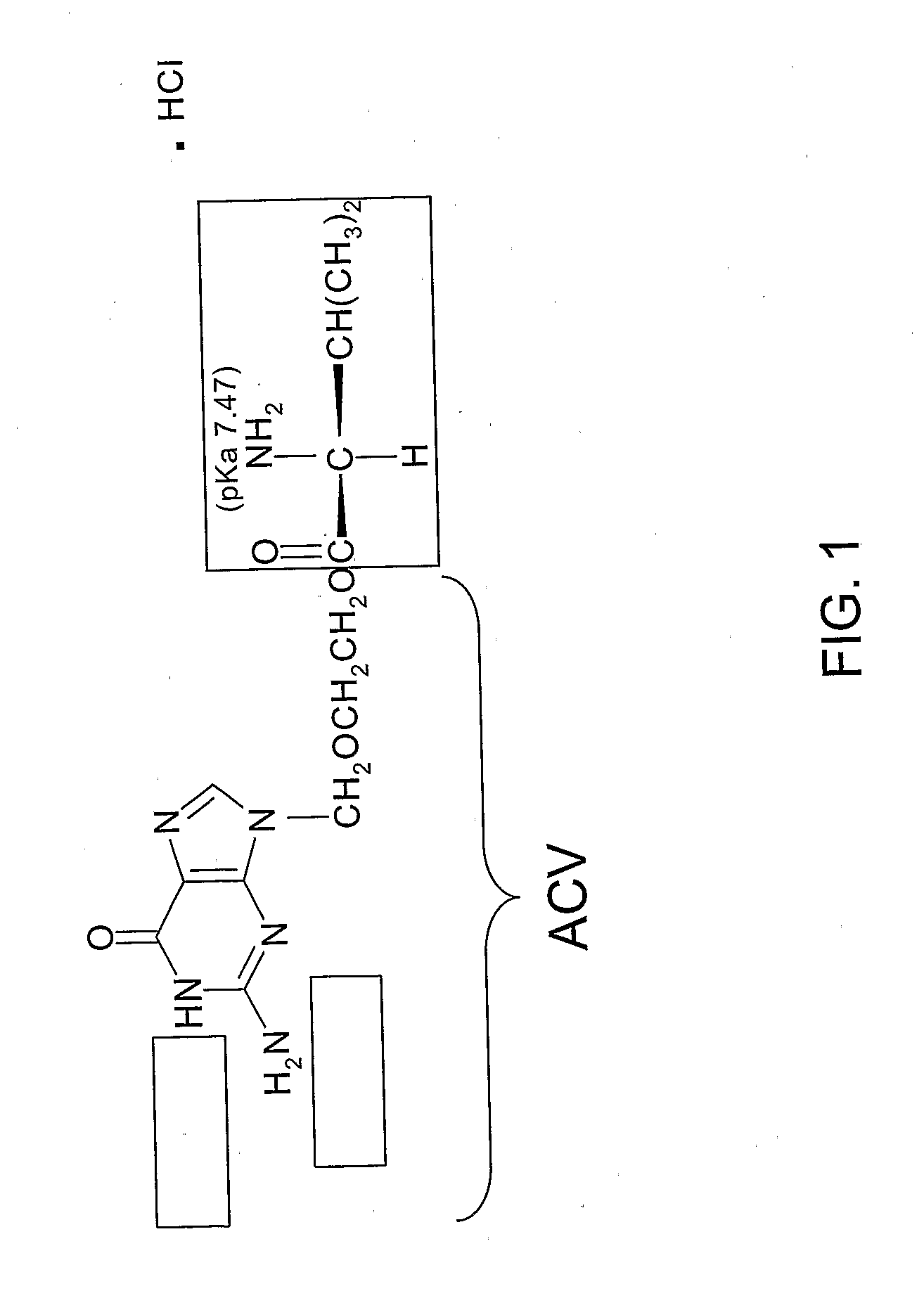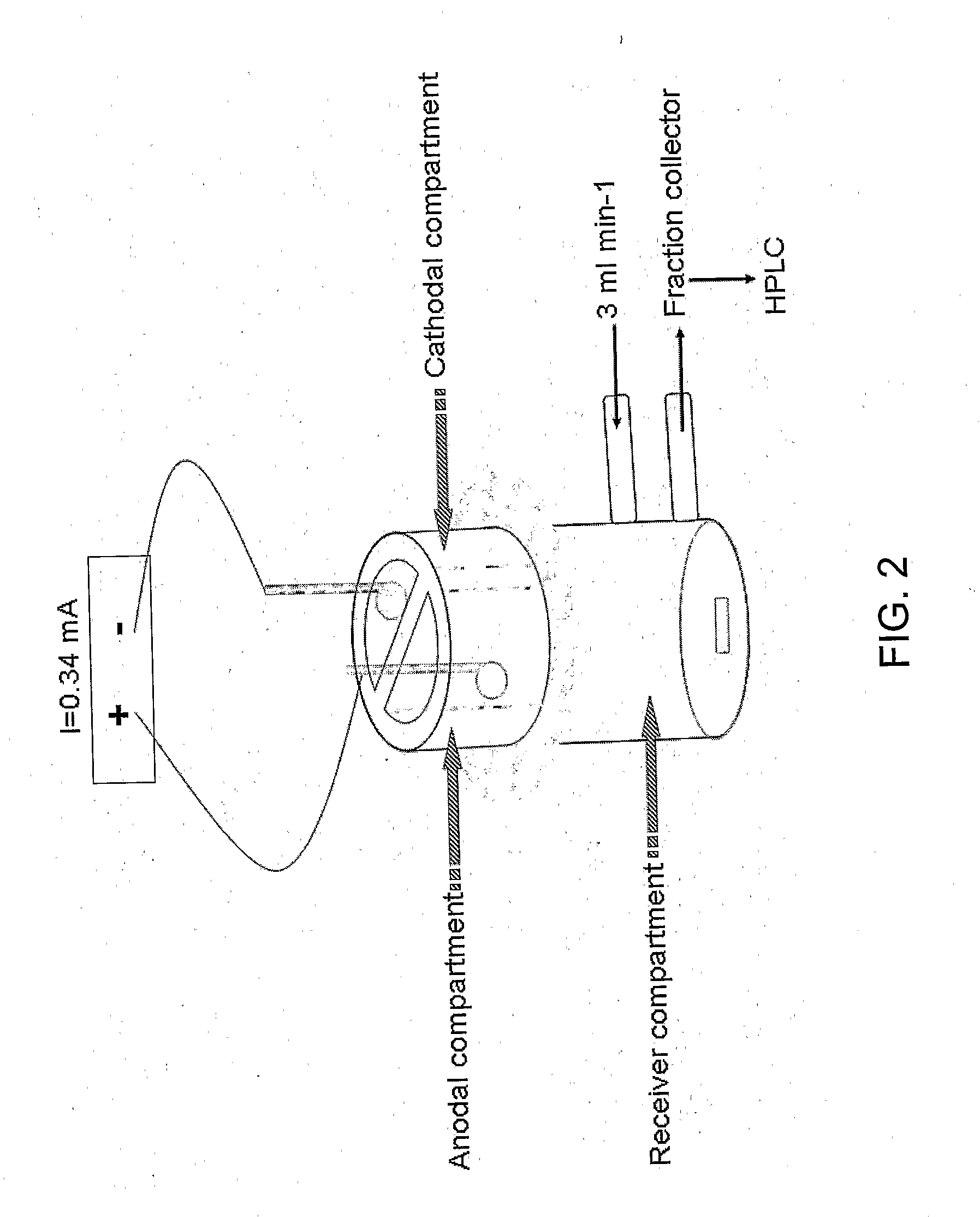Topical drug delivery by iontophoresis
a technology of iontophoresis and topical drugs, applied in the field of topical drug delivery, can solve the problems of inability to achieve the effect of reducing discomfort, reducing the risk of infection, and reducing the effectiveness of acv creams
- Summary
- Abstract
- Description
- Claims
- Application Information
AI Technical Summary
Benefits of technology
Problems solved by technology
Method used
Image
Examples
example 1
Materials Used in Studies
[0062]ACV and MeCN (Acetonitrile Chromasolv® for HPLC, gradient grade) were purchased from Sigma-Aldrich (Saint Quentin Fallavier, France). Acetaminophen, sodium chloride (NaCl), di-sodium hydrogen phosphate (Na2HPO4), potassium dihydrogen phosphate (KH2PO4), and trifluoroacetic acid (TFA) were purchased from Fluka (Saint Quentin Fallavier, France). VCV (see FIG. 1) HCl (99.5% purity) was purchased from Sequoia Research Products (Oxford, United Kingdom). All the solutions were prepared using de-ionized water (resistivity >18 MOhm cm).
[0063]Porcine ear skin, which is a well-accepted model for human skin (Dick and Scott, 1992; Sekkat et al., 2002), was used in these studies. Porcine ears were obtained from a local abattoir (Société d'Exploitation d'Abbatage, Annecy, France) a few hours after the sacrifice of the animals. The excised skin was then dermatomed (˜750 μm) on the same day and stored at −20° C. for a maximum of two months.
example 2
[0064]Iontophoresis was performed using vertical 3-compartment cells (FIG. 2). The skin was placed between two half-cells: the upper half, in contact with the SC, comprised two electrode / donor compartments, while the lower receiver compartment was in contact with the dermis. A flow-through system circulated phosphate-buffered normal saline (PBS: 16.8 mM Na2HPO4, 1.4 mM KH2PO4 and 136.9 mM NaCl; pH 7.4) through the receiver chamber (volume 4.7 mL) at a rate of 3 mL / h. Ag / AgCl electrodes were used throughout the study. The skin was allowed to equilibrate for one hour prior to the iontophoresis experiment. In order to reduce competition from Na+ ions present in the donor, and thus to increase the permeation of VCV, most experiments were performed using a salt bridge assembly. This strategy consists of physically separating the anodal chamber (Ag electrode immersed in PBS pH 7.4) from the donor compartment (drug solution in contact with the SC) and employing a salt bridge (...
example 3
VCV Stability
[0068]The aqueous stability of VCV in the donor formulations was investigated by periodic sampling of solutions (2 and 10 mM in water with 15 mM acetaminophen) over a period of 44 hours. In addition, the impact of an electrical current (0.34 mA) on this stability was examined over the same period. The chemical hydrolysis of VCV was also investigated in the presence of PBS pH 7.4. The cutaneous conversion of VCV to ACV via hydrolytic cleavage of the ester bond was verified as follows. Cells were assembled as for an iontophoresis experiment. A 100 μM solution of VCV in PBS pH 7.4 was placed in all the cell compartments and left in contact with the skin (SC and dermis) for 4 hours. The compartments were assayed for ACV and VCV immediately afterwards. Finally, the same experiment was performed with a 100 μM solution of ACV, to examine the stability of ACV when in contact with the skin.
[0069]Unbuffered aqueous solutions of VCV (2 mM: pH 5.65; 10 mM: pH 5.24) were very stable...
PUM
| Property | Measurement | Unit |
|---|---|---|
| area | aaaaa | aaaaa |
| current density | aaaaa | aaaaa |
| pH | aaaaa | aaaaa |
Abstract
Description
Claims
Application Information
 Login to View More
Login to View More - R&D
- Intellectual Property
- Life Sciences
- Materials
- Tech Scout
- Unparalleled Data Quality
- Higher Quality Content
- 60% Fewer Hallucinations
Browse by: Latest US Patents, China's latest patents, Technical Efficacy Thesaurus, Application Domain, Technology Topic, Popular Technical Reports.
© 2025 PatSnap. All rights reserved.Legal|Privacy policy|Modern Slavery Act Transparency Statement|Sitemap|About US| Contact US: help@patsnap.com



